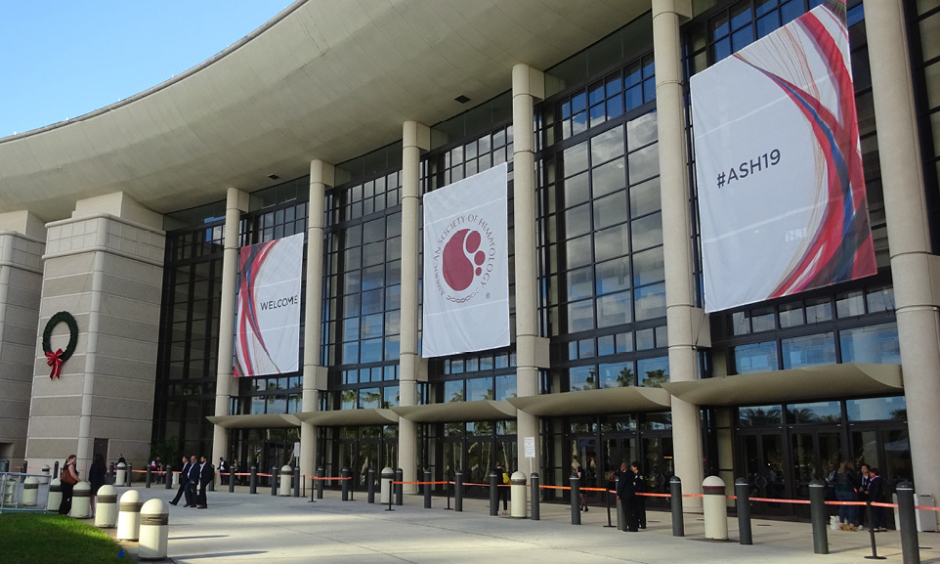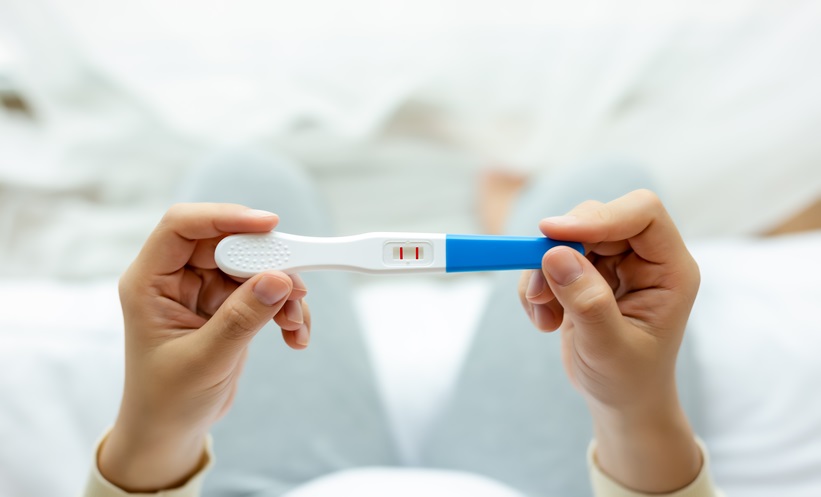The City Beautiful” proved to be an appropriate nickname for Orlando, Florida, USA, where the sun shined as >30,000 attendees flocked to attend this year’s American Society of Hematology (ASH) Congress. Taking inspiration from Orlando’s basketball team and the Wizarding World of Harry PotterTM, ASH was a magical event that featured a scientific programme that held the attendees spellbound. The exhilarating atmosphere could be sensed as soon as you entered the convention centre, aptly reflecting that of a theme park.
The EMJ team, along with the attendees, were treated to an array of session types including satellite symposia, meet the scientist sessions, spotlight sessions, and trainee activities and services. In addition to these, >3,000 abstracts were presented, showcasing the latest developments in haematology. Award winning abstracts covered topics that ranged from RNA splicing defects in cancer-linked genes and tyrosine kinase inhibitor resistance in chronic myeloid leukaemia, to biomarkers in graft-versus-host-disease, highlighting the diverse nature of the ongoing excellent research.
This year, a new category of abstract was added to the collection: trials in progress. Covering trials that have not reached their primary endpoint yet, these abstracts facilitated the discussion and collaboration between investigators, translational researchers, statisticians, and regulators.
Our hand-picked selection of abstracts from ASH cover topics that include bone marrow neutrophils, the safety and efficacy of ferumoxytol, and the microenvironment of haematopoietic stem cells. The abstract summaries have been written by the authors’ themselves, giving a first-hand account and novel insights into the research.
Three new clinical practice guidelines were announced at the meeting (sickle cell disease, venous thromboembolism, and immune thrombocytopenia), with two more to follow soon (von Willebrand disease and acute myeloid leukaemia). Developed by leading clinical, methodological, and patient experts, these guidelines provide actionable recommendations on how best to treat these diseases.
Following on from previous years’ attention on well-being, 2019 saw the first appearance of the ASH Wellness Studio. Throughout the meeting, attendees could visit the Wellness Studio to watch short (10–20 minutes) sessions on topics that contribute to the development of healthy habits. Among the topics delivered were actions that could be taken to improve sleep quality, avoid mental fatigue and burnout, and reduce stress.
Another initiative making its first appearance was the powernap pods. Attendees were encouraged to take a short 20-minute power nap in the specially designed chairs that lie you in a zero-gravity-like position. The pods popularity was not just the result of a free powernap blanket, but the fact that a powernap helped overcome jetlag for those who had travelled from around the world to attend ASH, and thus reduce tiredness and allow full participation in all that was available at the congress.
ASH put on a fantastic event this year, spoiling us for choice at every opportunity and making the most of the 2 million square feet that was the Orange County Convention Center. The rapid growth of the congress reflected the city that played host, but what will next year in San Diego, California, USA, hold? We are sure that it will be another unmissable ASH event. Till then, we present our review of ASH 2019.
New Gene Therapy Approach for Sickle Cell Disease Successfully Targets Fetal Haemaglobin Retention
IN LATER stages of pregnancy and in the initial weeks following birth, infants produce so-called fetal haemoglobin, a derivative that is especially suited for the lower oxygen environment present in the womb. Importantly, fetal haemoglobin inhibits the production of sickled red blood cells, making this molecule an attractive target to be considered when designing gene therapy approaches for the treatment of this serious condition. Now, researchers from Boston Children’s Hospital, Boston, Massachusetts, USA, have revealed encouraging results from a trial in which three adult patients received a transfusion of genetically engineered stem cells capable of reactivating fetal haemoglobin production. The results were presented in a press release at ASH dated 10th December, 2019.
In the study, the three patients were treated with a single injection of a drug that localised haematopoietic stem cells to the blood vessels where they were extracted. The captured cells were transduced with an inactivated virus designed to reduce expression of BCL11A, whose protein product has been shown to represent a key regulatory factor in the switch from fetal to adult forms of haemoglobin. Following a freezing step in which the cells underwent rigorous safety testing, the patients received controlled doses of chemotherapy to eliminate the resident haematopoietic stem cells in the bone marrow, preceding intravenous infusion of the modified stem cells.
Following an engraftment period and post-treatment follow-up, all three patients (who are 18, 10, and 9-months post-infusion) now harbour normal or near-normal haemoglobin levels and are producing fetal haemoglobin in quantities sufficient to prevent sickling. Additionally, no therapy-related adverse effects, outside of those commonly associated with autologous haematopoietic stem cell transplantation, have been reported. “We are seeing a remarkable reproducibility of the treatment effect in all of the patients treated to date,” commented Lead Researcher Dr David A. Williams. “We are very encouraged by the results we are seeing with this scientifically innovative approach to gene therapy for sickle cell disease.”
Maintenance of First Remission Leads to Improved Overall Survival in Acute Myeloid Leukaemia Patients, Results Suggest
VALIDATION of maintenance therapies for the extension of initial treatment response in patients with acute myeloid leukaemia (AML) has to date been ambiguous. Minimising the risk of relapse is clearly the primary goal, however definitive influences on survival benefit have not been robustly demonstrated. Now, results from a Phase III study presented in an ASH press release dated 10th December 2019 have shown an investigational oral form of azacytidine therapy to significantly improve overall survival in newly diagnosed, remissive AML patients following standard induction chemotherapy.
Approaches to post-remission management in AML patients is limited to either observation or stem cell transplant, the latter of which is not currently a scalable option across the patient demographic. This period represents a window in which further intervention can maximise the benefits of prior treatment and lead to long-lasting patient remission.
In the QUAZAR trial, 472 patients with AML aged 55–86 years and with either intermediate or poor-risk cytogenetics were enrolled from centres across 23 countries. Upon achieving complete response within 4 months of induction chemotherapy, patients were randomised to receive either 300 mg of CC-486 (i.e., oral azacytidine therapy) or placebo once daily for 14 days of a 28-day cycle including supportive care until disease relapse. Overall survival, relapse-free survival, safety and tolerability, and health-related quality of life were tracked.
Following a median follow-up of 41.2 months, a 31% decrease in risk of death among the CC-486-treated patients was reported compared to placebo, with median overall survival also showing average improvements of 7.9 months. CC-486 also conferred a significantly lower risk of relapse compared to placebo (10.2 months versus 4.8 months, respectively), and strikingly, these benefits were consistent across varying subgroups of patients, including those defined by the number of chemotherapy cycles received.
Dr Andrew H. Wei, Lead Study Author from the Alfred Hospital, Melbourne, Australia, highlighted that “the QUAZAR shows that, rather than observing patients and waiting for them to relapse, we can now actively engage in trying to reduce relapse risk and improve survival in the post-remission phase.”
Sutimlimab Offers Favourable Effects on Symptoms of Cold Agglutinin Disease
COLD agglutinin disease (CAD) is an autoimmune disease characterised by the onset of severe anaemia, fatigue, increased risk of blood clotting, and early death caused by the body’s immune system mistakenly attacking and destroying its own red blood cells. Diagnosis of this rare condition occurs after 60 or 70 years of age and currently has no approved treatment options. A new study, described in a ASH press release dated 10th December 2019, investigated the effect of sutimlimab on symptoms and pathology of CAD.
The classical complement pathway, which is typically overactive in CAD patients, can be blocked with the monoclonal antibody sutimlimab. The authors from University of Duisburg-Essen, Duisburg, Germany, explored the actions of sutimlimab designed to prevent C1s proteins from activating and whether this would be effective in retaining erythrocytes and ceasing haemolysis. The study recruited 24 patients with an average age of 71 years, all of whom had active CAD with haemoglobin levels ≤10 g/dL, above the normal range for total bilirubin, and a prior 6-month history of at least one blood transfusion. The primary endpoint of the study was an increase of two or more in haemoglobin or total haemoglobin level of 12 or higher, and no use of blood transfusion between Weeks 5 and 26. Intravenous administration of sutimlimab took place over 26 weeks and disease symptoms were assessed at Weeks 23, 25, and 26.
After the initial sutimlimab dose, haemoglobin levels rapidly increased and by the first week, quality of life scores improved. By the third week, most of the study group exhibited haemoglobin levels >11 g/dL and normalised total bilirubin. A serious adverse event was experienced by 29% of patients and at least one adverse event was experienced by 92% of all patients, many events of which were unrelated to sutimlimab. Adverse events related to the drug including swelling, higher blood pressure, and rhinorrhoea were deemed nonserious. A commonly encountered limitation for studies of rare diseases such as this one is sample size; furthermore, the absence of a placebo group was acknowledged by the authors to have limited the study. The investigation showed that response to sutimlimab administration over 26 weeks in CAD patients resulted in improved symptoms for CAD including improved haemoglobin levels, less fatigue, and fewer required blood transfusions.
Mapping the Future of Precision Medicine in Acute Myeloid Leukaemia and Myelodysplastic Syndrome
MORE than 1,300 patients with acute myeloid leukaemia (AML) or myelodysplastic syndrome (MDS) have been included in a comprehensive analysis of genomic sequencing and gene expression profiles, the first study to take a genome-wide approach that is unbiased in order to discover the links between genes, gene expression, the physical form of cancer cells, and patients outcomes. These findings were presented in a press release at ASH dated 10th December, 2019.
Blood and bone marrow samples were taken from 598 AML patients and 706 MDS patients. Researchers sequenced the DNA and RNA from these samples before combining the results with data on the health outcomes and physical features of each individual’s cancer. The findings from this were multifaceted: not only was the team able to corroborate known genetic subtypes of the cancers studied that are driven by chromosomal lesions or mutations, but they also discovered some brand new associations. Pairs of genetic alterations appeared to impact prognosis if they occurred simultaneously in patients, notably combinatorial mutations in NPM1 and cohesion genes which are ordinarily associated with good prognosis.
An additional discovery by the team was the similarity in the genes of certain cancers that are morphologically very distinct from one another. This suggests that standard approaches to cancer diagnosis and treatment could be combined with genetic analysis to offer a much more detailed picture of the cancer than morphology alone.
In an ASH press release dated 10th December 2019, Dr Ilaria Iacobucci, St. Jude Children’s Research Hospital, Memphis, Tennessee, USA, commented of the study: “Our study provides a much richer understanding of these subtypes, akin to a dictionary of all the genomic alterations. It also underscores the value of having comprehensive genomic information at the start of treatment to remove uncertainty and help clinicians better understand a patient’s outlook.” The findings of the study having meant that a complete genetic reference for AML and MSD subtypes is now available to guide future research into the development and treatment options of these diseases. Precision medicine for these and other diseases could be the next avenue of research, as the study has demonstrated that full genome-sequencing is feasible and helpful for identifying disease subtypes and prognosis.
Triple Drug Combination Aids Survival Benefit in Multiple Myeloma Patients
MULTIPLE myeloma, a rare cancer that affects the bone marrow and alters the blood’s plasma cells, currently has no cure but treatment can control the disease for several years. According to an ASH press release, a recent study found that adding daratumumab to carfilzomib and dexamethasone to treat patients with relapsed or refractory multiple myeloma resulted in increased survival. These results were presented in a press release at ASH dated 10th December, 2019.
Present treatment has greatly improved the life expectancy of patients diagnosed with multiple myeloma, yet a great proportion of the patients eventually relapse. A common treatment option is lenalidomide and bortezomib; although this improves survival outcomes, researchers state that many patients prescribed these agents experience disease progression or are forced to stop due to toxicity. Lead author of the study Dr Saad Z. Usmani, Levine Cancer Institute, Charlotte, North Carolina, USA, stated: “The majority of patients have disease progression on lenalidomide and, of the six treatment combinations that are currently approved in this setting, four have lenalidomide as part of their treatment combination.” He further stated that there is a need for novel treatment options for these patients as it makes little sense to re-challenge a patient with something they are progressing on just by adding another drug.
In their trial, the researchers investigated whether adding daratumumab to the current standard of care (carfilzomib plus dexamethasone) would improve progression-free survival, the time from randomisation to disease progression, or death from any cause. A total of 466 patients with relapsed or refractory multiple myeloma were recruited. These patients previously received therapy and were enrolled in the open label, Phase III trial CANDOR. Patients were randomised 2:1 to receive carfilzomib, dexamethasone, and daratumumab, or carfilzomib and dexamethasone, and of these patients one out of three were lenalidomide refractory.
Overall response rate, minimal residual disease, overall survival, and safety were evaluated, and results showed that the addition of daratumumab resulted in a greater response compared to carfilzomib and dexamethasone alone. Adverse events included thrombocytopenia and cardiac events, with heart failure being lower in the three-drug treatment group. Dr Usami concluded that providing lenalidomide free treatment for patients who do not respond to it is a real clinical need and that: “adding daratumumab to carfilzomib and dexamethasone may be helpful in controlling their disease.” Furthermore, because myeloma is a heterogenous disease, optimal disease control requires targeting different mechanisms of action to control the disease more effectively.
Immunotherapy versus Chemotherapy for B-Acute Lymphoblastic Leukaemia
RELAPSED B-acute lymphoblastic leukaemia (B-ALL) in paediatric patients preparing to undergo bone marrow transplant was more effectively treated with the immunotherapy drug blinatumomab, as opposed to standard chemotherapy, according to the results of a recent study presented at 61st ASH Annual Meeting in Orlando, Florida, USA and reported in a press release dated 10th December 2019.
The study, led by Dr Patrick Brown of the Johns Hopkins Kimmel Cancer Center in Baltimore, Maryland, USA, assessed patients receiving 3 months of chemotherapy prior to bone marrow transplant. Dr Brown and his team identified 208 patients with high or intermediate risk B-ALL and divided them into a blinatumomab treatment group and standard chemotherapy group. A median follow-up of 1.4 years revealed the advantages of blinatumomab treatment; patients showed 59% disease-free survival compared to 41%, overall survival was 79%, and 73% were able to proceed to transplant, compared with 41%, 59%, and 45% for chemotherapy, respectively. The interim analysis of the trial halted enrolment as the success of blinatumomab were significant enough to recommend it as the new standard of care.
Blinatumomab, a bispecific T-cell engager antibody construct, exhibits its action by causing the body’s immune cells to find and destroy cancerous cells. In contrast, chemotherapy works to destroy all growing cells in the body; this causes toxic side effects such as sepsis and fevers, as noncancerous cells are also targeted. Though blinatumomab is approved by the U.S. Food and Drug Administration (FDA), this study was the first to give evidence of its ability to benefit paediatric patients with minimal residual disease who are awaiting transplant. Dr Brown recalled his past experiences with this disease, stating “it appears that blinatumomab is a much more effective bridge to transplant for this patient population, leading to a much larger portion of patients who are actually able to receive a bone marrow transplant.”
The next steps to be taken by Dr Brown and his team will be to monitor the long-term effects of blinatumomab, alongside studies to investigate the potential of optimising the immunotherapy earlier in the B-ALL treatment cycle.
New ‘Choosing Wisely’ List Developed to Reduce Unnecessary Testing in Paediatric Patients
TO CAMPAIGN against avoidable tests and procedures in the paediatric population, ASH and the American Society of Pediatric Hematology/Oncology (ASPHO) launched a list of recommendations as part of their ‘Choosing Wisely’ campaign. This was presented at this year’s ASH Annual Meeting in Orlando, Florida, USA, as part of a press release dated 9th December 2019.
A panel was assigned the task of creating the list, made up of two co-chairs representing ASH and ASPHO, five members chosen by each organisation, and one delegate acting as the Choosing Wisely advisor on methodology. The guiding principles used to make their recommendations was avoiding harm to patients, creating evidence-based recommendations, an evaluation of the costs and frequency of tests and treatments, producing recommendations in the clinical scope of the haematologist, and a contemplation of the potential impact of the recommendations.
The panel agreed upon five evidence-based recommendations for haematologists and their patients. The first recommendation is not to perform preoperative haemostatic testing in a healthy child with no personal or family history of bleeding and the second is not to transfuse platelets in a nonbleeding paediatric patient with a platelet count >10,000 per mcL, the exception being when signs or symptoms of bleeding are present or if invasive procedure is necessary. The third recommendation states that children with venous access associated thrombosis, without a positive family history, should not be tested for thrombophilia. The fourth recommends not to transfuse packed red blood cells as treatment for asymptomatic paediatric patients with iron deficiency anaemia if there is no signs of active bleeding or haemodynamic instability. The fifth and final recommendation relates to granulocyte colony stimulating factor, in that it should not be administered routinely in paediatric patients with asymptomatic autoimmune neutropenia in the absence of recurring or acute bacterial and/or fungal infections.
It is the hope of ASH co-chair Dr Sarah O’Brien, of the Nationwide Children’s Hospital, Columbus, Ohio, USA, that haematology practitioners will learn these recommendations and teach them to their colleagues. She says, “it is very exciting to see a list focussed on the unique needs of our patient population.”
A Bright Future for Sickle Cell Disease Patients
PRESENTATIONS at this year’s ASH meeting in Orlando, Florida, USA, demonstrated the huge efforts being made by researchers to understand sickle cell disease (SCD) and how best to treat patients. Three studies were presented, reporting great strides forward made this year in understanding the underlying mechanisms that cause the disease, how to reduce pain for children during vaso-occlusive crises, and fragmentation of care between childhood and adulthood. ASH is passionately committed to supporting research in this area and the announcement of these study results comes after a number of years of work across the USA and internationally supporting this important cause with the publication of clinical guidelines for SCD management and care and the development of the Sickle Cell Disease Coalition.
The first of the studies announced was an exploration into the role of protein nuclear factor I X (NFIX) in the development of SCD. The team found that NFIX prevents adult erythroblasts from producing fetal haemoglobin, and therefore from producing healthy red blood cells. To test this, the team suppressed NFIX in adult erythroblasts and found that this allowed the cells to produce fetal haemoglobin. Although it’s not yet clear whether NFIX directly or indirectly represses production of fetal haemoglobin, future studies will endeavour to learn more about this process.
For children experiencing vaso-occlusive crises, pain is often present and this was the subject of the second study reported in the press release. The study, which was the first of its kind conducted in Nigeria to test the use of oral arginine supplements for acute pain control, enrolled 68 children who had been hospitalised for vaso-occlusive crises in two hospitals in Abuja, Nigeria, and administered oral arginine to half of the participants while half received placebo. Doses were given every 8 hours until the patient was discharged from hospital or up to 15 doses. The group who received arginine showed a faster decline in pain as well as requiring less pain medication overall (the decrease in total opioid use was not statistically significant), and their crises ended sooner than for those in the placebo group. Half of the participants who received arginine supplements were discharged by Day 5 on their hospital admission, compared to only a quarter of the participants who received the placebo. These results indicate that oral arginine supplements should be tested further to see whether administration at the onset of a crisis could prevent hospitalisations and readmissions.
In the final study, researchers looked at the fragmentation of care for patients with SCD during childhood and adulthood, noting that children with the disease are much more likely than young adults to receive consistent care. In the study, it was found that 60% of children with the disease were receiving care from just one facility, whereas 78% of young adults with the disease had been admitted to multiple care facilities. The study analysed the health records of almost 7,000 people who had been diagnosed with SCD and attended medical centres in California, USA, between 1991 and 2016. The participants were grouped into three separate age ranges: 10–17 years, 18–25 years, and 26–33 years. As patients moved from the first age group to the second, fragmentation of care became more frequent, however age was not the only indication of this: patients without health insurance, patients who were hospitalised more frequently, and who did not attend specialist SCD centres were also more likely to receive fragmented care. Fragmentation of care, however, was not independently associated with an increased risk of death.
Commenting on the studies, Dr Julie Panepinto, Medical College of Wisconsin, Milwaukee, Wisconsin, USA, said: “These studies together illustrate how progress is being made all the way from the laboratory bench to dissemination and implementation of better treatments and systems-level quality improvements.”
Socioeconomic Factors at Play in Cancer Survival Rates
CHILDREN with acute myeloid leukaemia who were from low-income neighbourhoods were found to be 2.4 times more likely to die following treatment, according to a study presented at ASH 2019 and discussed in a press release dated 7th December 2019. The study, which analysed data from around 1,500 patients who had participated in clinical trials, compared low, middle, and high-income neighbourhood children and found this disparity between socioeconomic status and survival rates.
Clinical trials, by nature, should provide treatment that is consistent for all patients within the group; therefore, these findings were particularly concerning for the researchers. This could point to factors that arose which were not related to the chemotherapy. “We expected there to be a difference, but the degree of difference is quite substantial,” explained Dr Lena E. Winestone, UCSF Benioff Children’s Hospital in San Francisco, San Francisco, California, USA, who was the lead author.
Within the analysis, data was gathered pertaining the patients’ neighbourhoods, including median income and education status. Results showed that socioeconomic factors could be used as significant predictors of death. Race, known-biologic factors, and insurance status were also accounted for. Survival time of 5 years post-diagnosis was 68% for middle and high-income patients, 61% in low-income patients, and 43% in patients who were living in poverty.
While the researches did not identify the reasons for a higher death rate, one suggestion is toxic stress: a known association of poor socioeconomic status. This could play a role in chemotherapy response or immune recovery. The team stated plans to examine cause of death in the patients to determine whether the higher risk was treatment or disease related.
Dr Winestone called for collection of socioeconomic status in clinical trials going forward, to provide more accurate information and avoid reliance on neighbourhood data: “If we could gather that information, it would allow us to dig deeper into the question of how someone’s circumstances outside of the clinical aspects of their disease impact their health outcomes.”
First Engineered Blood Vessel Model Sheds Light on Clots
BLOOD clots commonly lead to heart attacks, stroke, pulmonary embolism, and a host of other life-threatening events. Clots have been hard to investigate for sustained periods of time, until now. Researchers from the Emory University School of Medicine, Atlanta, Georgia, USA, have engineered microvasculature on a chip that facilitates the investigation of the lifetime of a clot, the data of which was presented in an abstract session at ASH 2019 and discussed in a press release dated 7th December 2019.
Typically, blood clots are treated with drugs that cause bleeding, restoring blood flow and avoiding ischaemic injury; however, this is a fine balancing act because there is a risk of excessive bleeding. Understanding how a clot develops, progresses, and resolves will provide key insights into how a drug should function to bring about the best clinical effect. Lead study author Dr Yongzhi Qiu commented: “This is the first assay to allow us to really understand what happens during the lifetime of a clot – looking at it from the time it forms, to see how clots get better, either on their own or when adding different clot-busting drugs.”
In a similar manner to culturing skin cells on a two-dimensional slide, microvasculature on a chip was engineered by growing endothelial or blood vessel cells in a tissue-like material to form three-dimensional micro-vessels with branches. The technology is capable of modelling many aspects of a natural blood vessels biophysical environment including vessel size, geometry, wall stress, and the stiffness of the surrounding tissue.
The researchers have already discovered new information about clot formation and dissolution. Data indicate that inflammation has a bigger involvement than first thought, including the induction of protein deposits that initiate clot formation and altering clot-dissolution time.
“What we are learning is that not all clots are created equal, and not all clots should receive the same type of therapy – some therapies are going to be better for certain clots than others,” concluded Dr Qiu. This assay has the potential to help develop better and targeted antithrombotic and anticoagulant therapies, especially for thrombosis in inflammatory diseases such as lupus, rheumatoid arthritis, and inflammatory bowel disease.








